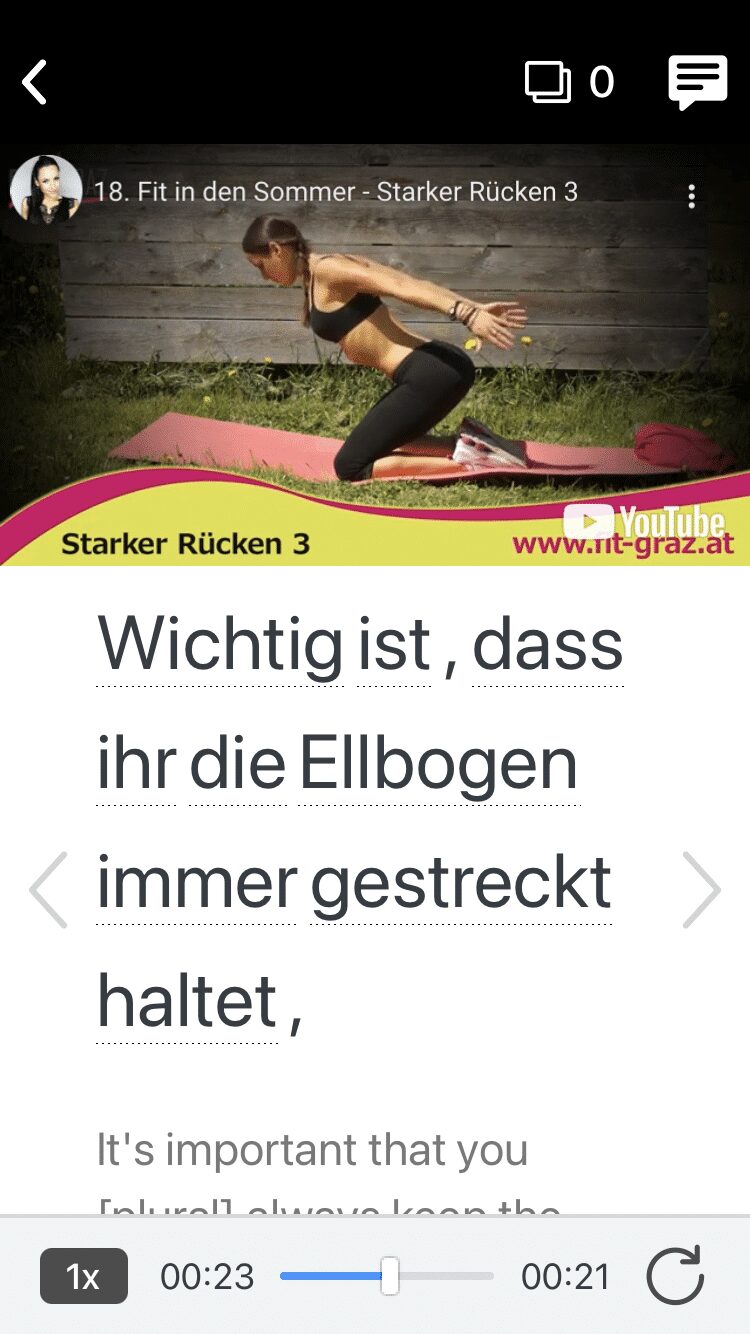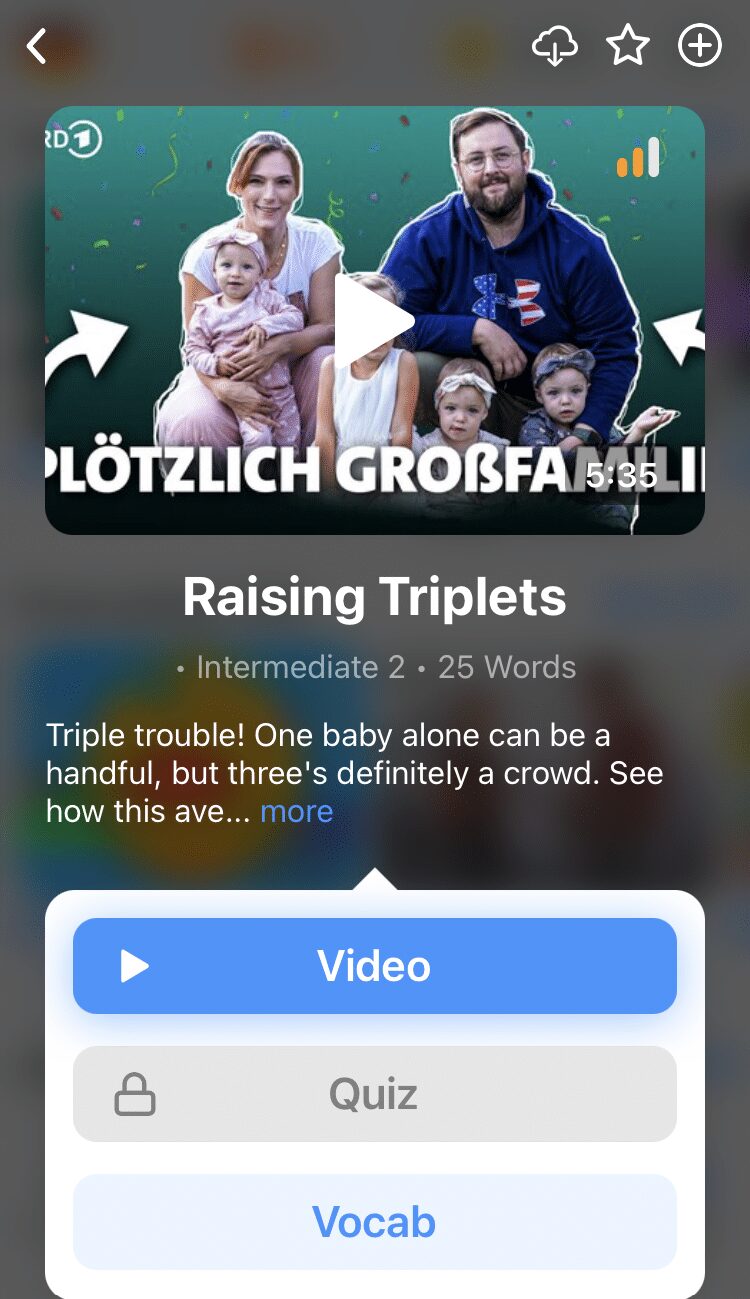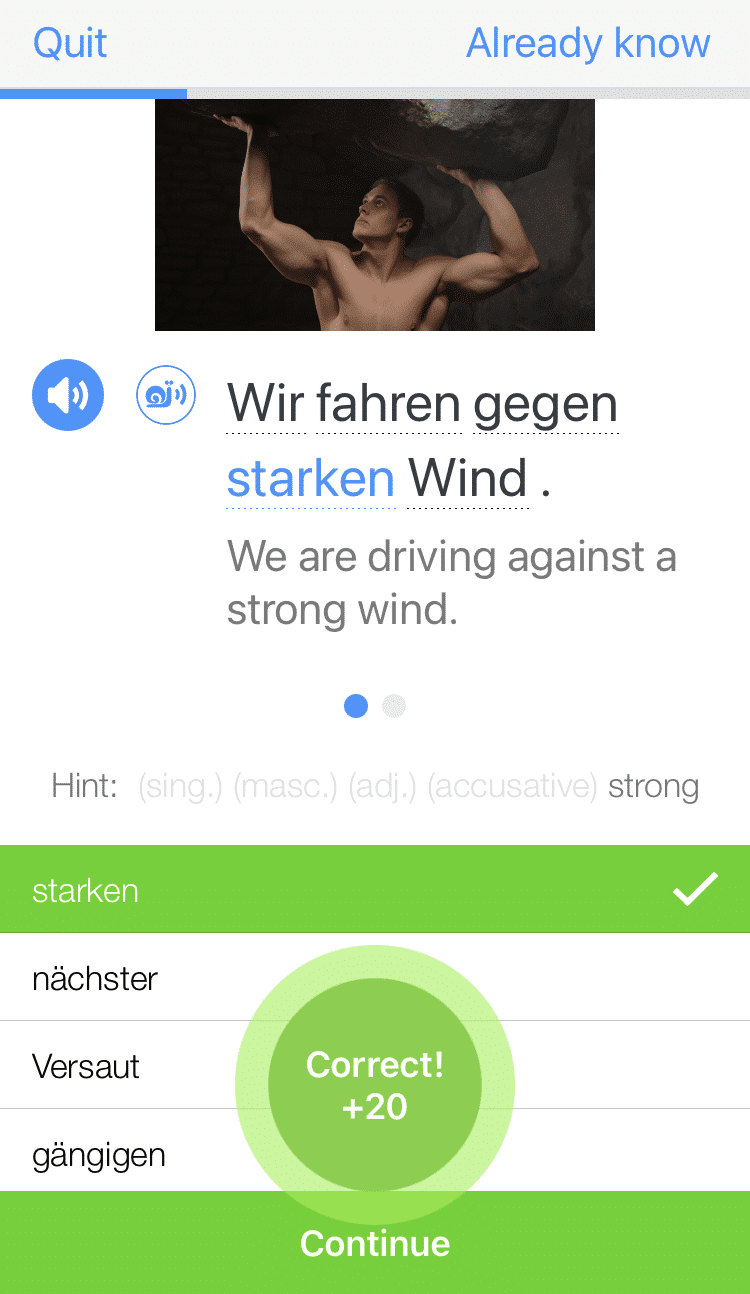Contents
Gender in German

In German, your fireplace is female, the chair next to it is male and the painting above it is neuter.
Don’t worry—consider this post your quick and easy cheat sheet to understanding German genders. We’ll go over why German has genders, the different genders and how to determine which gender you’re working with.
Download: This blog post is available as a convenient and portable PDF that you can take anywhere. Click here to get a copy. (Download)
Why Are There Genders in German?
Grammatical gender is thought to have evolved with language. English originally had genders as well, but as it evolved, those genders disappeared.
In most cases, however, if a language’s historical forms made use of gendered words, it likely retained this feature up to the present day, largely for the sake of logical sentence structures that speakers already understood.
That’s because grammatical genders are more about classifying nouns into categories rather than assigning them a physical gender. Fireplaces aren’t truly “feminine”—it’s just a way of structuring the language.
For the most part, there’s no reason a certain noun receives a certain gender. A chair (Ein Stuhl) is masculine in German, feminine in Spanish and neuter in Polish. The gender of a noun is simply a grammatical rule.
This grammatical rule is critical to the German language, however, as various grammatical structures rely on the gender of nouns—such as adjective endings, articles, pronouns and plural forms, to name a few.
A Basic Overview of German Genders
Are you ready for a crash course on German genders? Here we go!
As mentioned previously, German grammar has three genders, and each noun is one of those three. The first place you’ll likely come across German genders is in the three different words for “the” in German:
Der — the (masculine)
Die — the (feminine)
Das — the (neuter)
These are the articles you use for singular nouns. If you’re talking about multiple things in plural, you can forget the gender and just use the plural article die, which looks the same as the feminine, but isn’t!
Same goes for German indefinite articles, which you can read about in this post.
Gender and Adjectives
Knowing the correct gender of a noun is important when adding in adjectives before the noun.
This is when you need to add an ending to the adjective, and that ending depends on a number of things: the kind of determiner used before the noun, the case the noun is in and (you guessed it!) the gender of the noun.
For example, the gender of the noun is particularly apparent in adjectives when there is no definite article before the noun, like “a small apple” or simply “small apple”.
Since there’s nothing making the gender and case of the noun clear, the adjective ends up doing the job. So if we say “the green apple”, we have a definite article, in which case the adjective can relax and just add on an -e:
But if we want to say “a green apple”, the word ein doesn’t make it clear what the noun and case of the word Apfel is, so the adjective needs to jump in. In this situation, we’ll add -er to the adjective grün to reflect that the noun der Apfel is masculine and in the nominative case:
Take a look at a couple other examples:
Ein kleiner Tisch — a small table (masculine)
Eine kleine Blume
— a small flower (feminine)
Ein kleines Sofa — a small sofa (neuter)
Notice how each ending is mimicking the definite article: der and er, die and -e, das and -es.
If that sounds convoluted, it’s because it is. Adjective endings in German are notoriously confusing!
While the above logic is a helpful starting point, there’s a fair bit more to cover. Lucky for you, we’ve got you covered with our very own article on the subject with everything you need to know!
Gender and Pronouns
We often learn the word for “it” in German as es, but there’s actually more to it than that, where the gender of a noun becomes very important.
In English, when you’re not talking about a person, we refer to everything as “it”. (The chair? It is over there.)
But in German, you need to use the correct pronoun depending on the gender of the noun.
Let’s look at an example. Der Apfel is a masculine noun, so if you’re referring back to it, you need to use the masculine pronoun er, which we otherwise know as the word for “he”:
Der Apfel ist rot, aber er ist noch nicht reif. (The apple is red, but it is not yet ripe.)
The same goes for any other noun. Want to refer back to die Torte (the cake)? You need to use the feminine pronoun sie:
Ich habe eine Torte gebacken und sie war sehr lecker! (I baked a cake and it was very tasty!)
The same also goes for German possessive pronouns.
Now, we’ll finish with an example that usually throws learners off. Das Mädchen (the girl) is a neuter noun, defying expectation. This means if you’re referring back to “the girl”, it is grammatically more correct to use es, not sie:
Ein Mädchen saß am Fenster. Es hatte lange, blonde Haare. (A girl was sitting by the window. She had long, blonde hair.)
It’s worth noting that in colloquial speech, or examples where the pronoun is further away from the original mention of the word das Mädchen, you will see sie used to refer to “her”.
You can look at different sentence structures and understand better how genders work in German with FluentU.
FluentU takes authentic videos—like music videos, movie trailers, news and inspiring talks—and turns them into personalized language learning lessons.
You can try FluentU for free for 2 weeks. Check out the website or download the iOS app or Android app.
P.S. Click here to take advantage of our current sale! (Expires at the end of this month.)
How to Determine the Gender of Any Noun
This questionnaire requires you to know the meaning of the noun you’re working with.
If you don’t know the meaning of the word, look it up in your favorite online dictionary. After you add the noun to your vocabulary list, you can work through the questions below.
The questionnaire is very simple. Go through the questions in order. A “yes” answer means that you’ve found the correct gender for your noun and can stop. If you answer “no,” move on to the next question; continue until you answer “yes.”
Let’s get started!
Round 1: Is It a Masculine Noun?
- Does the noun describe a day of the week, a month or a season?
- Does the noun end in -ich, -en, -ig, -ismus, -ant, -ling, -er, -el or –us?
- Does the noun describe a river not in Germany?
- Does the noun describe an instrument or tool?
- Is the noun a cardinal direction (north, south, east or west)?
- Does the noun describe the manufacturer of a vehicle?
If you answered “yes” to any of these questions, your noun is masculine and uses the definite article der in the nominative case. Congrats—you’re done!
If all of your answers were “no,” continue to the next round of questions.
Round 2: Is It a Feminine Noun?
- Does the noun describe a number?
- Does the noun describe a German river?
- Does the noun end in -e, -a, -ei, -heit, -keit, -ik, -ie, -ung, -tät, -ion, -in, -schaft, -nz or -ur?
If you answered “yes” to any of these questions, your noun is feminine and uses the definite article die in the nominative case.
Still haven’t answered “yes”? Keep going…
Round 3: Is It a Neuter Noun?
- Does the noun end in -chen, -lein, -nis, -tel, -tum, -ment, -ma or –um?
- Does the noun begin with Ge-?
- Is the noun an infinitive of a verb?
- Does the noun describe a metal?
If you answered “yes” to any of these questions, your noun is neuter and uses the definite article das.
Still haven’t found the right gender for your noun? Don’t sweat.
If you aren’t able to determine the gender of your noun with this questionnaire, it’s best to look up the word. Sometimes, there are exceptions to the rules.
Again, just make sure you add the words to a vocabulary list as you look them up so you can practice them and memorize the correct gender as you learn!
Where to Practice German Gender Skills
If you’re looking for ways to practice the German concept of gender, here are some helpful resources:
- Choose from der, die and das to complete this quiz.
- Enter the correct article for the nouns provided here, including compound nouns.
- Complete this short paragraph by choosing the correct der and ein words and check your answers afterwards.
- Fill in the blanks in this story about Little Red Riding Hood.
A word to the wise: When practicing vocabulary terms, memorize the gender of each noun as well as the spelling and meaning. If you can remember those components together, it’ll be much easier to recall the correct gender later on.
That wasn’t so bad, was it?
You can refer to this article whenever you get stumped on a German gender—you’ll get it down in no time.
Download: This blog post is available as a convenient and portable PDF that you can take anywhere. Click here to get a copy. (Download)
And One More Thing...
Want to know the key to learning German effectively?
It's using the right content and tools, like FluentU has to offer! Browse hundreds of videos, take endless quizzes and master the German language faster than you've ever imagine!
Watching a fun video, but having trouble understanding it? FluentU brings native videos within reach with interactive subtitles.
You can tap on any word to look it up instantly. Every definition has examples that have been written to help you understand how the word is used. If you see an interesting word you don't know, you can add it to a vocabulary list.
And FluentU isn't just for watching videos. It's a complete platform for learning. It's designed to effectively teach you all the vocabulary from any video. Swipe left or right to see more examples of the word you're on.
The best part is that FluentU keeps track of the vocabulary that you're learning, and gives you extra practice with difficult words. It'll even remind you when it’s time to review what you’ve learned.
Start using the FluentU website on your computer or tablet or, better yet, download the FluentU app from the iTunes or Google Play store. Click here to take advantage of our current sale! (Expires at the end of this month.)









